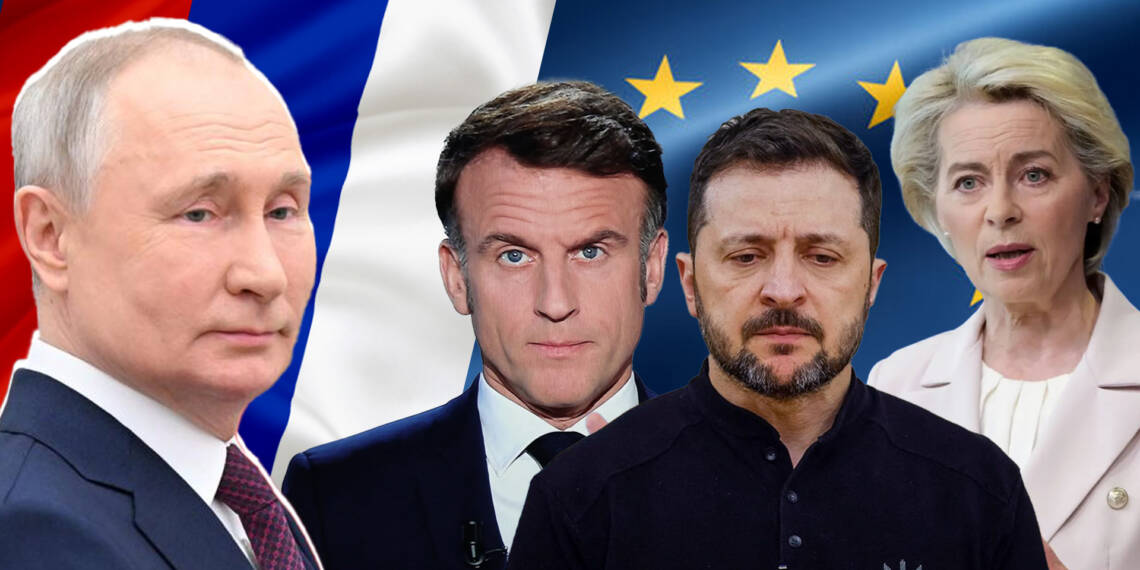Imagine there’s a big guy on campus—strong, influential, and not exactly on good terms with a certain girl. They’ve had a fallout, and the girl isn’t happy with him. To get back at him or maybe to make him jealous, she starts hanging out with his close friends, trying to win them over.
But here’s the thing—why would the guy’s loyal group of friends turn their backs on him so easily? They’ve known him for years, and their bond runs deep.
Now, putting this through a geopolitical lens, it all starts to click. The European Union is like the girl in this story, and Russia is the powerful guy she’s not getting along with. The EU is now trying to cozy up to Russia’s allies, hoping to shift the balance for some ‘rare earth’ stuff. But they might not realize that this move could backfire and come off as more provocative than strategic.
Rare Earth Gamble by EU
In a bid to deepen ties amid a shifting geopolitical landscape, the European Union has pitched itself to Central Asia as a “reliable partner,” aiming for greater access to the region’s critical raw materials, clean energy resources, and political alignment over Russia’s war in Ukraine.
At the first EU-Central Asia summit held in Samarkand, Uzbekistan, the EU and five Central Asian countries — Kazakhstan, Kyrgyzstan, Tajikistan, Turkmenistan, and Uzbekistan — agreed to elevate their relationship to a strategic partnership. The EU also unveiled a major €12 billion investment package under its Global Gateway Initiative, targeting projects in transport, energy, water, digital connectivity, and raw materials.
European Commission President Ursula von der Leyen, speaking at the summit, underscored the urgency of building alliances. “Reliable partners have never been so important,” she said, pointing to rising global competition and the redrawing of influence by powers like Russia, China, and the US.
Of the €12 billion package, €3 billion will go toward transport infrastructure, €2.5 billion to critical raw materials, and over €6 billion to water, energy, and climate initiatives. The EU’s growing interest in Central Asia stems from its push for climate neutrality by 2050 and the need to reduce dependency on China, which currently controls a large share of global supply chains for key minerals.
Central Asia’s vast reserves — including over 30% of the world’s chromium and significant shares of manganese, zinc, and titanium — make it an attractive partner. However, Europe’s approach also includes support for local industry development, not just resource extraction, von der Leyen emphasized.
The summit also addressed multilateral cooperation and Russia’s ongoing war in Ukraine. While Central Asian nations have maintained a neutral stance at the UN, the EU has urged stronger alignment, especially regarding sanctions circumvention.
European Council President António Costa stressed the need to reform global cooperation frameworks and warned that Europe will “continue to increase pressure” on Russia, counting on Central Asia’s cooperation.
Leaders agreed to hold a Central Asia-EU Investors Forum later this year and establish an EBRD office in Uzbekistan. Both sides also backed the idea of holding biennial summits to sustain momentum in this growing partnership.
Russia on-edge over the move
Now, here’s the reality check: the EU wants a rare-earth deal with Central Asia. But it’s assuming these countries will ditch Russia. Not so fast. Most of these Central Asian nations are part of the CSTO—a Russia-led military alliance. Their ties with Moscow aren’t just diplomatic; they’re deep-rooted and strategic.
Russia, for its part, is actively working to deepen its grip on Central Asia’s rare earth metal reserves. These nations hold substantial deposits, and Moscow sees them as key to countering China’s dominance in the global rare earth market—while also limiting Western leverage in the region.
Domestically, Russia holds the world’s fifth-largest rare earth reserves, estimated at 3.8 million metric tons. But its actual output is less than 1% of the global total. To shift gears, Moscow has proposed joint ventures—even with the United States—to boost production and challenge China’s monopoly.
This is exactly why the EU is in a rush. It wants to get ahead of Russia and lock down strategic deals before Moscow reasserts full influence. A smart move on paper—but it all hinges on how Central Asia plays its cards. Will they balance both powers or pick a side?
That’s the game everyone’s watching.








